Goldfish
Goldfish are naturally green
or gray. Species, however, vary, and many unusual occurrences occur. The
divergent fish may be black, transparent, gold, white, or white with silver; it
may have a severed tail or protruding eyes, or it may not have a normal dorsal
fin.
Over the centuries the
selection and production of these rare species have produced more than 125
species of goldfish, including the common-tailed star, of domestic animals; veil
tail, three-stranded, flowing tail; lion's head, with a swollen
"hood" on his head; and celestial, with eyes out, pointed upwards.
Goldfish eat omnivorously,
eating plants and small animals. In captivity, it works well on small
crustaceans and food can be supplemented with chopped mosquito larvae, grains, and other foods.
Breeding occurs in spring or
summer. As the season draws to a close, the colors become brighter, the woman's
abdomen grows larger, and the male can grow to have a head-sized cover on the
gill, back, and pectoral fins.
The eggs attach to the water
plants until they hatch about a week later. Pet goldfish are known to live 25
years; life expectancy, however, is very short.
Fleeing from park ponds and
gardens, goldfish have become commonplace in many parts of the eastern United
States. When it resumes wildlife, it returns to its original color and can grow
from an aquarium size of about 5-10 inches (2-4 inches) to a height of up to 30
inches.
Cyps are evolved from wild red-yellow
crucian carp. Goldfish is
one of the world's three most famous ornamental fish. It originated in China
and has a history of more than 1700 years.
Goldfish
holds a very important position in the commercialization of ornamental fish in
many countries. Goldfish has a beautiful body and a wide variety of colors. "Five independent species of fish,
fish are gold grass, red dragon eye, crane top red, blisters and black
life.", etc., and its body shapes include lion head, tall head, blisters,
dragon eyes, pompons, and pearls. Scales, butterfly tails, tiger heads,
etc.
The
five representative species of goldfish are grass gold, red dragon eye, crane
top red, blisters, and black life.
Settlement of origin
"Goldfish
are ornamental fish species from wild carpians.". "China has become the first
country to farm goldfish". Crucian carp naturally has a gray belly and a
white belly, which makes it easier to avoid predators in natural waters."
Sometimes,
the pigment cells of carpians carp change into fish that turn golden
yellow.". If there is
no human intervention, such a changeable person will be eaten by the enemy
because it is easy to disclose the goal."
Goldfish
originated in China. It is documented that when Jinhuan rushed to Lushan
Mountain, there were red-skinned fish in the lake. This red-skinned crucian
carp was the earliest ancestor of goldfish. Therefore, it can be
considered that goldfish was first discovered in China during Jin Dynasty
(between 265-420 AD).
Chinese scientists have made significant
contributions to the preservation and breeding of goldfish."
Goldfish were introduced to Japan in
1502, and after World War II, Japan introduced many species through
Taiwan.". Goldfish
were introduced to Britain in the late 17th century, imported into Europe in
the 18th century, and to the United States in 1874, and then spread around the
world.".
Chinese
scholar Chen Zhen summarized its evolution into four stages: ① the wild state of red and
yellow crucian carp to the stage of semi-domesticated state; ② the pond culture stage-the
beginning of goldfish domestication; ③ the pot culture stage; ④ the conscious artificial
selection stage. It is not difficult to see that goldfish evolved from
wild crucian carp through long-term natural mutation, artificial selection,
hybridization, and other factors. There are hundreds of species of
goldfish.
Goldfish
belong to the same species as crucian carp in taxonomy. Compared with crucian
carp, goldfish have a huge variation in external morphology, but in general, the
whole fish body can be divided into three parts: head, trunk, and
tail. The foremost part of the head is the mouth, and the back is the
nose, eyes, and operculum.
Some
breeds have sarcoma on the upper end of the head, some breeds have pompoms
above the nose, some breeds have protruding eyes, are positioned upward or have
blisters, and some breeds have operculum leaking to form gills.
The
torso of the goldfish is covered with scales, and there are mainly normal
scales, transparent scales, and pearl scales. There are lateral lines on
the side, and the number of lateral line scales, under lateral line scales, and
lateral line scales of different species of goldfish are not the same.
The trunk of a typical goldfish has pectoral, pelvic, anal, dorsal, and caudal fins,
and individual species have no dorsal or anal fins. The tail of a goldfish
is composed of a caudal stalk and a caudal fin, and the shape of the caudal fin
varies widely.
The
male goldfish entering the breeding period will have white chasers on the edge
of the gill cover and pectoral fins. This is the most accurate time to
distinguish the sex of the goldfish. Another important difference between
male and female goldfish is the cloacae. Generally, males are small, narrow,
and concave; females are large, slightly rounded, and convex.
Variation
in external form
The
body of a goldfish is composed of three parts: head, trunk (carcass) and tail,
and the dividing line between each part is not obvious. Usually from the
snout end of the body to the back edge of the operculum, a line perpendicular
to the beginning of the pectoral fin is called the head; from the posterior
edge of the operculum to the beginning of the anus or anal fin is called the
trunk; from the anus or anal fin The trailing edge of the scale to the posterior side of the lateral line is called the tail.
The ancestor of goldfish is wild crucian carp. However, from the perspective
of external morphology, it is very different from crucian carp, and there is
almost no single trait that has not changed. The introduction is as
follows:
Body
type variation
Goldfish are silver-gray,
red, yellow, white, black, purple, blue, transparent, variegated, and
five-flowered. The color of wild crucian carp is dull and unsharp. And
domestic goldfish have many bright colors. On the surface, it seems that a
lot of new pigments have occurred during the process of homemaking in goldfish.
In fact, it is not the
case. From the microscope observation of the scales, the pigments that are
present in the brightly colored goldfish are also present in the wild crucian
carp that is not brightly colored. There are only three color components
of goldfish: black pigment cells, orange-yellow pigment cells, and light
blue reflective tissue, all of which are present in wild crucian carp.
The bright and changeable
body color of domestic goldfish is only due to the recombination,
redistribution, changes in strength and density of these three components, or
the disappearance of one or more of the original pigments of wild crucian
carp.
During the ontogeny of
goldfish, there was a phenomenon of fading. Black goldfish, such as ink
dragon eyes, ink bubbles, etc., change with age. Some snakeheads fade to
orange-red or red-black within 2-3 years, some fade to black and white, and
some remain black for a long time. There are very few permanently black
goldfish.
All species of goldfish are
grayish-brown at the juvenile stage. After a certain period of development, the
pigment cells disappear and turn into the body color of the fish. Only the
difference between purple, transparent and five-flowered goldfish is earlier
than other goldfish, which can be distinguished by the naked eye after body
shape differentiation.
Body shape variation
The body shape of wild crucian carp is oblong
and flat. Domestic goldfish are shorter in size and rounded on both sides.
The mode of the ratio of the body length to the head length of a goldfish is
2.4, while that of a crucian carp is 3.5.
This shows that goldfish are short-bodied,
while crucian carp are long-bodied. The ratio of body height to head length
is the same for goldfish and crucian carp, both are 1.2. This shows that
goldfish and crucian carp have the same body height in terms of the ratio of
head length. The height of the goldfish seems to be higher than that of
the crucial, but it is actually due to the shortened body length.
Variation in the number of scales
The number of scales on the lateral line of
domestic goldfish can be as few as 22 and as many as 28. The variation
range of wild crucian carp is 28-32 pieces. The mode of lateral scales of
domestic goldfish is 26, while that of crucian carp is 29. This is
obviously related to body length.
After the scales fall off due to trauma, they
can regenerate, but the shape, size, and location of the regenerated scales are
different from the original scales, which affects viewing. Keeping
goldfish should try to avoid the scales from falling off.
Variation of the dorsal fin
There
are two kinds of the normal dorsal fin and no dorsal fin (dragon back). All
wild crucian carp and most domestic goldfish species have normal fins; a few
species have their dorsal fins disappeared, completely without dorsal fins, and
their backs are round and smooth.
There
are also some stumps, short backs, and some protrusions on the back, but these
variations are not liked by breeders and are usually eliminated at the juvenile
stage.
Variations of pectoral fins
Pairs of pectoral fins are located behind the
breast and gill openings of the goldfish, short and long. The mode of the
ratio of the distance from the snout to the pectoral fin to the head length,
the mode of both domestic goldfish and wild crucian carp is 1.0. The
author has observed a tail with double pectoral fins, which is very rare.
Variation of pelvic fin
Pairs of pelvic fins are located at the bottom
of the ventral surface of the goldfish, and there are short and long ones. The
ratio of the distance from the snout to the pelvic fin to the head length is
1.6 for domestic goldfish and 1.7 for wild crucian carp.
Variations of anal fins
The anal fin of goldfish is located near the
back of the anus. All wild crucian carp have a single anal fin, while domestic
goldfish have a single butt, double buttock, single buttock (3 buttocks), residual
buttock, and no anal fin. The distance from the snout to the anal fin, the
ratio of the head length, is 2.1 for domestic goldfish and 2.7 for wild crucian
carp.
From the results of the distance between the
snout end to the pelvic fin and the snout end to the anal fin, it is obviously
related to the body length. It can be seen that the shortening of the body
length of domestic goldfish starts from the pelvic fins and reaches the hips
most significantly.
Variation of caudal fin
Goldfish have a single tail, double tail, upper
single and lower double (3 tails), vertical tail, unfolded tail (fantail,
butterfly tail spreading fins and upwards, long tail, medium-long tail, short
tail and stump tail, etc.).
There are also many variations in the color of
the caudal fin. Some caudal fins have the same color as their body colors; some
are red and white; some species have red tail fins with white edges, some red
tail fins have black edges; some species have red tail fins with black edges.
Patches of different colors, such as various five-flowered varieties belong to
this category.
Head shape variation
Breeders across the world divide the head type
into tiger head, lion head, goose head, tall head, hat, and toad head. Among
these head types, some are of the same type and have different names in
different places.
For example, what is called tiger head by
Beijing breeders are called lion heads in Nanjing. It is called a hat in
Beijing, and a tall head or goose head in the south. The author agrees
with Chen Zhen's naming and distinguishes the head shape into three types: flat
head, goose head, and lion head.
Life
habits
Goldfish have a mild temperament and generally
have a life span of about 6 years, although some are longer. Goldfish is a
kind of omnivorous and partial carnivorous freshwater fish, with developed
throat teeth, which can swallow harder bait. Goldfish have strong
adaptability to water temperature but cannot adapt to drastic changes in
temperature.
The suitable water temperature is 18-26°C. Too
high or too low temperature will affect the feeding, growth, and reproduction of
goldfish. Goldfish like slightly alkaline water and the pH value of the
water body is more appropriate at 7.5-8.0. When the water temperature began
to rise during the transition of spring and summer in northern my country,
goldfish also entered the breeding period. Controlling the water temperature at
about 20°C during this period is more conducive to the spawning and hatching of
goldfish.
Variety & Classification
The classification of goldfish is more diverse.
According to the traditional classification, it is roughly divided into grass
goldfish, dorsal fin, and no dorsal fin. Among them, grass goldfish is the
most common color crucian carp in the fish market; dorsal fins are divided into
literary species and dragon species, and the representative species are lions
head and dragon eye; without dorsal fins are divided into egg species and
dragon back, and the representative species are orchids.
Goldfish include "Dragon Eye" and
"Egg Fish". " Dragon Eye " is the most common
two-tailed goldfish, looking down from the back of the fish, as the word
"Wen". "Dragon Eye" has a further variation, with
protruding eyes. The variation of the "egg fish" is more
obvious, the body shape is completely different from the streamlined shape of
the wild state, and becomes an oval shape.
The dorsal fin of the fish is also degraded. Another
further variation is that the fish head gives birth to fat, commonly known as
"lion head". "Goldfish Breeding Method" introduced the
basic types of goldfish and "lion head" as follows:
Dragon eye fish: "Dragon eye fish, this
kind of black is as black as ink, and the one that remains unchanged until the
length of the length is the upper one. It is called the ink dragon eye. There
is also pure white, pure red, pure emerald, and large safflowers, finely
broken red. Pointers, tiger skins, red-white-green-black flowers, many kinds of
changes, cannot be described in detail.
Literati always named their suits and colors. The body is always
thick and uniform, the tail is big and upright, and the body is positive. The
round, round and smooth mouth, it rises and falls in the water and swims
steadily and smoothly, without pitching and running, making the viewer feel at
ease. It is top-grade. There is also an egg dragon eye, which is also a kind of
egg fish."
Egg fish and lion head: "Egg fish, this
kind of ridgeless spines, round like a duck. Its color is variegated, all like
a dragon, but it has no ink color, and its eyes are not protruding. The head
and tail of the figure areas before. And there is a kind of raw meat on the
head, which refers to the thick remaining, causing the eyes to sink.
It is especially popular among players. It is
pure white and the first flesh is red. The name Lionhead fish: the older the
head, the taller the flesh. There is a thorn on the back or a bubble-like
gold, because it is strung by a fish, and it is not expensive."
The color and variegation are the same as before, and there is no
black. The head and tail of the body are like dragon eyes, and only two eyes
are not protruding. It can also give birth to a lion's head over time. It has a
ridge. The short thorn, the lack, and the unconnected are the ears of the egg
fish."
In short, name it arbitrarily, and there is
never a person who has a face." Others think that the color change is
related to the feeding or growth stage: "To the bright color, it is all in
the breeding method. The dragon eye fish is black when it comes out, and the
egg fish is almost black and slightly lighter when it comes out. It is full of
red, black, and red, red and white, broken flowers, and whole flowers. Among
them, the color cannot be changed, and it is the method of raising. If one
fails, the color of flesh red and white flesh will often appear."
Distribution
range
From a global perspective, goldfish farming is
mainly concentrated in Asia. Thailand and Japan have the largest farming scale
and the widest impact. In addition, Indonesia, Malaysia, and Singapore are all
distributed.
At present in China, all provinces except Tibet
have goldfish farms or ornamental fish trading markets. The four major
producing areas of domestic goldfish are mainly Fuzhou City, Beijing-Tianjin The region, Suzhou-Hangzhou Region, and Guangzhou City. Among them, Fuzhou City
ranks first.
In 2017, Fuzhou City had nearly 60 goldfish
farms with an area of 133hm 2 and more than 80 strains. It is known as
the "Goldfish Capital of China".
Reproduction
The shape selection of broodstock generally
includes five aspects: shape, dynamics, color, health, and specifications. The standard for morphological characteristics of broodstock should be pure and
excellent strains, with obvious characteristics, uniform body, and standard
body shape and tail shape.
The color standard is: the color should be
full-bodied and vivid. Monochromatic fish should be pure and flawless; redfish should be red from head to tail like fire; cuttlefish should be black and
shiny; two-color fish should be alternately colored and not chaotic; crane top
red and silvery-white all over, sarcoma on the top of the head straight, red
like a bun flower. Choose a broodstock that is sturdy, free from injury,
disease, mildew, complete scales, and no scaling phenomenon.
(1) By selecting 1-2-year-old male fish and 2-4
year-old female fish, new male, and old female broodstock adopt the method of
male and female separate culture, reasonable stocking density, and strengthen
the feeding of high protein feed and animal and plant food to maintain
Appropriate water temperature, sufficient light, and maintaining a freshwater
environment, while strengthening the prevention of broodstock diseases, and
strengthening broodstock prenatal cultivation is beneficial to increase the
amount of goldfish conceiving eggs.
(2) In the reproduction process, adopting a
combination of males with a female-male ratio of 1:1~3 more than females and
adopting distant mating as much as possible can increase the fertilization rate
of goldfish; at the same time, choose sunny weather. In a suitable fish nest,
water flushing stimulation and other methods can increase the amount of
goldfish spawning.
(3) The natural breeding method of goldfish is
the easiest to operate, and it is easy to implement in mass breeding
production, and can avoid the broodstock from being injured by artificial
reproduction, and greatly reduce the postpartum mortality of broodstock.
The method of artificial reproduction is
relatively complicated and the workload is large, but the number of eggs laid
is significantly higher than that of natural reproduction.
Among the three artificial insemination methods
of artificial reproduction, the wet insemination method can minimize the damage
of the broodstock, and the fertilization rate is higher.
The fertilization rate of artificial
gynogenesis is relatively low. At this stage, artificial gynogenesis is in the
stage of research and experimentation, but the offspring obtained from it can
obtain the excellent traits of the genetic mother, with high purity, and good
development prospects.
Goldfish
fry can reach sexual maturity after one year of cultivation. Goldfish is a
kind of temperature-changing animal, and its breeding time is directly affected
by water temperature. The breeding seasons of goldfish are different in the
north and south of our country. In the south, the breeding season usually
enters from March to April each year.
1.
Female and male identification of
goldfish: Before sexual maturity, the difference between the female and male
appearance of goldfish is very small. In the breeding season, the male-female
appearance is gradually obvious.
2. The first fin of the
male ventral fin and the operculum have milky white "star chaser".
The genital pores are small and narrow, slightly concave inward; while the
female fish feels soft when touching the above parts with their hands, without
"chasing stars", and the genital pores are slightly convex outwards.
3.
Preparations before breeding. The
spawning pool or tank is preferably 1 to 2 square meters and the water depth
is 20 to 25 cm. It can hold 6 to 8 pairs of broodstock. Household goldfish can
also, be raised in enamel or plastic basins, and 1 to 2 pairs of broodstock can
be placed.
4. Goldfish eggs are sticky eggs, and there must be
attachments when laying eggs, commonly known as "fish nests", so that
the eggs adhere to them and facilitate hatching. Families can use
Ceratophyllum, Hydrilla verticillata, etc., just put 1 to 2 plants for each
pair of broodstock.
3. The reproduction of goldfish. There
are two breeding methods for goldfish: natural breeding and artificial
breeding. The family adopts natural breeding more.
Generally,
first-age goldfish weighing 8-9 grams and 7-8 cm in length can conceive only
1,000 to 1500 eggs; while the first-year goldfish with a body length of 10 to 12 cm
can conceive 5000 to 10,000 eggs; weight 60 A second-age goldfish with a weight
of 13 cm and a body length of 30,000 to 40,000 eggs; a third-age goldfish with
a weight of 75 grams and a body length of 14.5 cm can conceive 70 to 80,000
eggs.
The
selected goldfish are matched according to the ratio of female to male in a
ratio of 1:1.5-2 and then placed in the spawning pond or basin or tank, and
placed in the fish nest to be spawned at the same time.
Generally,
eggs can be laid from early morning to morning the next day. After the
goldfish spawning is over, first, the female and male goldfish should be taken
out and kept separately in time. It should be noted that the water temperature
should be the same as the original pond water temperature, and be careful to
prevent the fish from being injured.
The second is to put the fish nest into the prepared fish pond (tank, pot) for
incubation. It takes 4 to 5 days when the water temperature is 20°C. The fish
nest is taken out 2 to 3 days after hatching, and the fry can be cultivated.
Farming
pond construction
Build a fish pond in a place with good
ventilation, sunny weather, a sufficient water source, and convenient drainage
and irrigation. The area of the
fish pond can be built according to the size and shape of the rural courtyard.
Before building the store, the original surface
should be leveled and compacted, and built with bricks. The bottom and wall of
the pool should be generally 0.6-0.7m high, and the shape should be
rectangular. When building the pool, water injection and drainage ports should
be constructed to facilitate injection and drainage.
The drain at the bottom of the pool must have a
certain slope to facilitate drainage. Can be used for laying the bottom of
the greenhouse film, economical, practical, and durable. Establish
protective measures around the fish pond to prevent children from drowning. For
newly built fish ponds that need to be alkaline before use, the main method is
to add straw or wheat straw for soaking after filling the water. The time is
about 15 days to remove the alkaline, and then rinse with clean water several
times, and then add new water. Ready to use.
Water source
selection and water cultivation
The water source of yard aquaculture water must
be sufficient, and the water quality must be good, non-toxic, and free of
impurities. In rural courtyards with tap water, tap water is better. Tap
water is convenient to get water and contains fewer bacteria, which is most
suitable for goldfish breeding.
When constructing aquaculture ponds, it is
necessary to install a filtration circulation system device,
which can promote ecological balance by releasing active bacteria, filtering
solid substances floating in the water, and disinfecting lamp procedures. Before
putting the fish, the pond must be cleaned with quicklime or bleaching powder
to kill harmful organisms in the pond. After disinfection, fill it with tap
water or groundwater and use it after exposure to the sun.
Maintain the watercolor during the breeding
period. The weather is sunny in summer, and the water is changed every
afternoon at four o'clock in the afternoon. Each change of water is about
one-third of the total water volume.
At
night, the oxygen is increased by an air pump or spraying water. If there is a
serious floating head phenomenon at times, you can add hydrogen peroxide to the
pool for rescue. When the temperature exceeds 32℃
in summer, a sunshade net is installed on the pool to assist in cooling down.
Adult fish stocking
Before stocking adult fish, the floating
objects and other harmful substances in the pond should be removed. The
stocking density of goldfish is 100-400 fish per square meter of 1-3cm and
50-100 fish for 6-10cm. In the fry stage, monoculture is the mainstay. During
the growth process, the stocking density of goldfish should be continuously
adjusted according to the growth of the fish.
Bait delivery
The
feeding of bait adheres to the three principles, qualitative: high protein
content, fresh and clean; quantitative: pay attention to the time when the
goldfish in the pool is eaten each time, generally, it is appropriate to eat
within 20-30 minutes; timing: around 7 o'clock in the morning in summer, around
three o'clock in the afternoon, because the fish swim less in winter, you can
feed them once around noon.
It should be noted that every feeding time must
be fed once, and the duckweed or a small amount of pellet feed needs to be
properly fed according to the appetite of the fish. In courtyard farming, artificial synthetic pellet feed is mainly used. Feed is a very good
auxiliary bait, and it is also the best substitute when natural bait is in
short supply.
Disease prevention
In
courtyard farming, we must insist on prevention, timely diagnosis, and
symptomatic medication. Especially from winter to spring, due to the lack
of movement in winter for a long time and insufficient sunlight, goldfish have
weaker physique.
This time is the easiest to incubate period. At the beginning of each spring season, keep in the sun frequently to enhance the physique of the goldfish. Disinfection of ornamental fish ponds and breeding tools. Combining with the water change in the clean pool, sprinkle strong chlorine solution on the wall and bottom of the pool, or use a small water body medicinal bath such as 3% NaCl solution or 20mg/L KMnO 4 solution.
Disinfect for 20-30 minutes and rinse with clean water for use. Boxes, dip nets, and other tools are regularly disinfected with disinfectant. In the epidemic season of fish diseases, on the basis of spraying medicine to disinfect the whole pond, the medicine bait is fed regularly. And pay special attention to prevent cats, rats, frogs, and related water birds from harm.
Goldfish
Monograph
The biggest feature is the detailed record of a variety of rare species. There are more than 50 varieties mainly introduced, and for each introduced one, one of three similar varieties must be mentioned. Generally speaking, the colors of goldfish are mostly red and black, and most of the species recorded in "Zhuyupu" are red spots with white background, which should be the precious species advocated by the author's era. The book has very detailed criteria for judging the merits of goldfish species, including "back theory", "lip theory", "head theory", "gill theory", "supply theory", "eye theory", and "scale tube theory". ", "tail theory", "front fin theory", "middle fin theory", "back fin theory", "back fin theory", "body fin theory", "belly theory". Setting standards in this way is the most detailed of all goldfish books in ancient China.


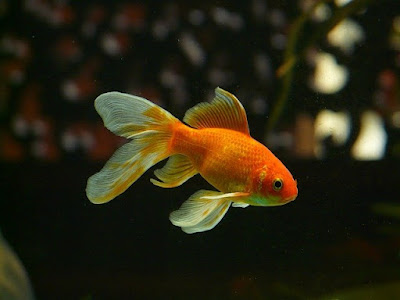

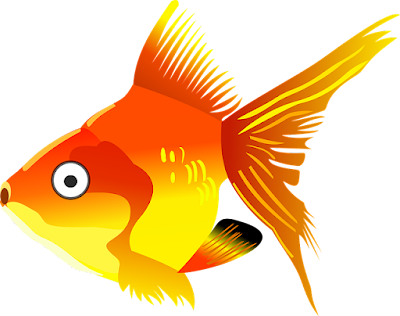
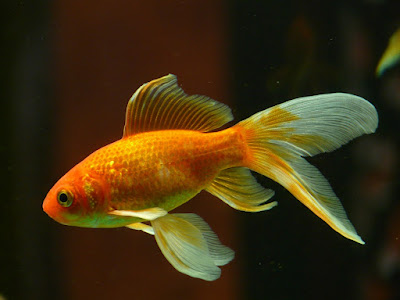
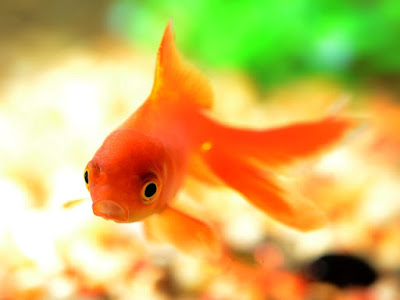
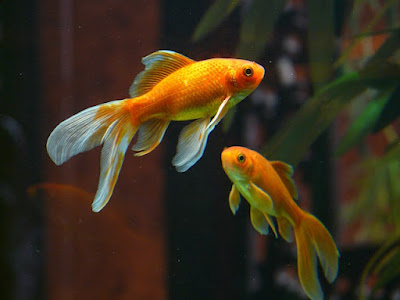




No comments:
Please do not enter any spam message in the link.